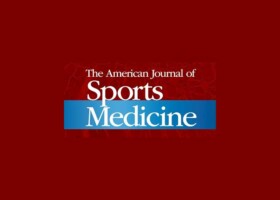
Authors:
Peter J. Millett, MD, MSc, Salvatore Frangiamore, MD, MS, Grant J. Dornan, MS, Marilee P. Horan, MPH, Sandeep Mannava, MD, Ph.D., Erik M. Fritz, MD, Zaamin B. Hussain, MA, MB BChir, Gilbert Moatshe, MD, Jonathan A. Godin, MD, MBA, and Jonas Pogorzelski, MD, MHBA
Abstract:
Background:
Arthroscopic rotator cuff repair (ARCR) is one of the most commonly performed orthopaedic surgical procedures; however, patient-reported outcomes have varied greatly in the literature.
Purpose:
To identify preoperative factors that affect outcomes and to develop prognostic tools for predicting functional outcomes in future ARCR cases.
Study Design:
Cohort study; Level of evidence, 3.
Methods:
Patients were included who underwent ARCR for repairable full-thickness rotator cuff tears with at least 2 years of follow-up. Twelve predictors were entered as candidate predictors in each model: age, sex, workers’ compensation (WC) status, previous cuff repair, tear size, tear shape, multiple-tendon involvement, tendon stump length, Goutallier classification, critical shoulder angle, length of follow-up, and baseline subjective outcomes score. Postoperative American Shoulder and Elbow Surgeons (ASES), 12-Item Short-Form Health Survey Physical Component Summary (SF-12 PCS), QuickDASH (short version of Disabilities of the Arm, Shoulder and Hand), and patient satisfaction were each modeled through proportional odds ordinal logistic regression. Model results were presented with marginal covariate effect plots and predictive nomograms.
Results:
Overall, 552 shoulders fit inclusion criteria. The mean age at surgery was 60.2 years (range, 23-81 years). Twenty-five (4.5%) shoulders underwent revision cuff repair or reverse arthroplasty at a mean 1.9 years (range, 0.1-7.9 years) postoperatively. Overall, 509 shoulders were eligible for follow-up, and minimum 2-year postoperative patient-reported outcomes were obtained for 449 (88.2%) at a mean 4.8 years (range, 2-11 years). The ASES score demonstrated significant improvement from pre- to postoperative median (interquartile range): 58 (44.9-71.6) to 98.3 (89.9-100; P < .001). Women demonstrated significantly higher 2-year reoperation rates than men (5.8% vs 1.6%; odds ratio, 2.8 [95% CI, 0.73-9.6]; P = .023). Independently significant predictors for lower postoperative ASES scores included previous ARCR (P < .001), female sex (P < .001), and a WC claim (P < .001). Significant predictors for worse QuickDASH scores included WC claim (P < .001), female sex (P < .001), previous ARCR (P = .007), and ≥7 years of follow-up time. Significant predictors for lower SF-12 PCS scores included WC claim (P < .001), female sex (P = .001), and lower baseline SF-12 PCS. Last, significant independent predictors of patient satisfaction included previous ARCR (P = .004), WC claim (P = .011), female sex (P = .041), and age (P = .041).
Conclusion:
Excellent clinical outcomes and low failure rates were obtained after ARCR by using careful patient selection and modern surgical techniques for ARCR. Female sex, WC claim, and previous ARCR were significant predictors of poorer outcomes in at least 3 patient-reported outcome models. Prognostic nomograms were developed to aid in future patient selection, clinical decision making, and patient education.
